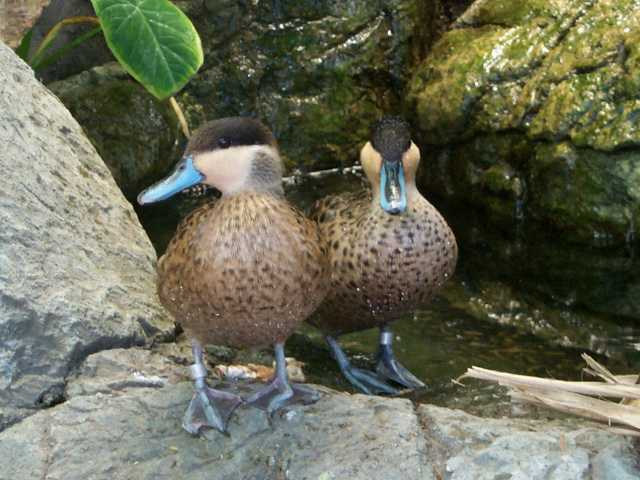
Hottentot teal(Anas hottentota, or Anas punctata, or Punanetta hottentota)
Phylum —chordata
Class — aves
Order — anseriformes
Family — anatidae
Genus –anas
Appearance
The Hottentot teal is a small species of duck with a black head and nape and buff-colored cheeks and throat. The back is blackish-brown edged with buff, the breast is brown spotted with black, and the belly is mottled buff. These teals have a green wing speculum and a blue bill with a black streak on the top. The legs and feet are gray. Hens are lighter underneath than males, with mottled flanks.
Length – 330-350 mm, weight – 54-288 g.
Habitat
The range of the Hottentot teal extends in Africa from Angola, Zambia, eastern Congo, Malawi, northern Mozambique, Tanzania, Kenya, Uganda, southern Ethiopia, Sudan and Madagascar. They are mainly found in tropical eastern Africa: Ethiopia to Cape Province, westward to northern Botswana and Namibia, and Madagascar.
The Hottentot teal is sedentary in West Africa and Madagascar but partly migratory elsewhere, following a regular but unpredictable short-distance migration routes (up to 700 km) in southern and eastern Africa in response to changing water levels.
Diet
The Hottentot teal is omnivorous, although its diet consists mainly of grass seeds, especially of the grass Sacciolepis, however it may also consume aquatic invertebrates almost exclusively such as crustaceans like ostracods, mollusks, water insects such as beetles and their larvae, if these are super abundant.
Reproduction
Hottentot teals build large, raised nests with grasses, leaves, and reed stems. Males and females pair during breeding season but usually separate after the female's incubation period. Chicks are born with a dark brown back, a tan belly, and a gray bill and legs.
In captivity
Lifespan average is 20 to 30 years.
In summer, Hottentot teals are kept in outdoor enclosures. The minimum size of the enclosure is 3 square meters.
In winter, they should be transferred to an insulated enclosure with a temperature of at least +5 °C. It is desirable to equip the enclosure with additives in the form of branches and perches. In the winter room, you must install a pool with running or frequently replaced water.
As a winter bedding for waterfowl, you can use soft hay, which is laid out in places where birds rest.
The diet includes grain feed-corn, wheat, barley, millet, oatmeal, wheat bran, grass, meat and fish meal, chalk, small shell, gammarus. In the warm season, it is good to give various greens - cut dandelion leaves, lettuce, plantain, duckweed. Good food for ducks - wet mixture of grated carrots, bran, various cereals. During the reproductive period and during molting, they are mixed with wet foodor given separately: fish and minced meat.
Hottentot teals are friendly to other birds, so they can be kept on the same pond with other ducks.
Artificial shelters for nests are installed in the paddock. Ducks independently incubate, breed and raise ducklings.
 Russian
Russian
 English
English
























